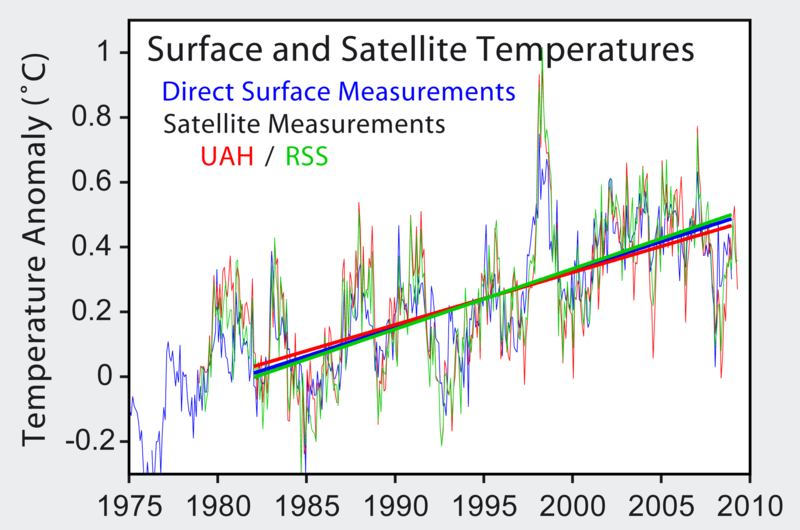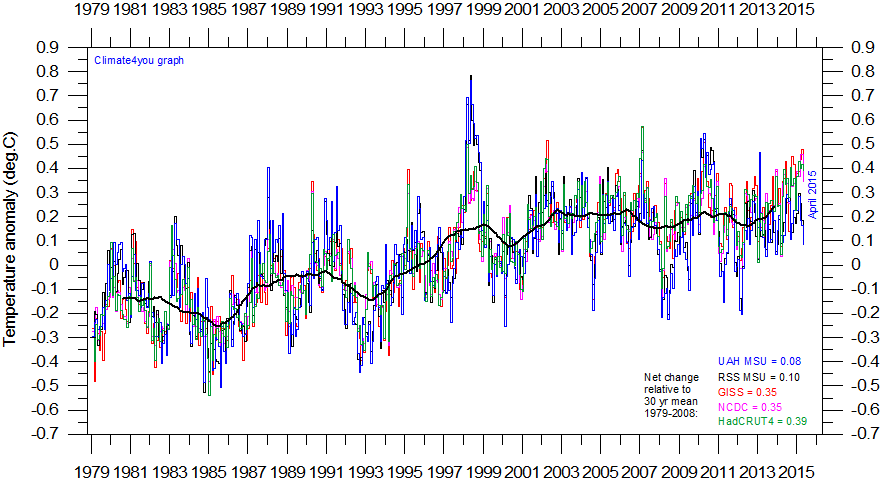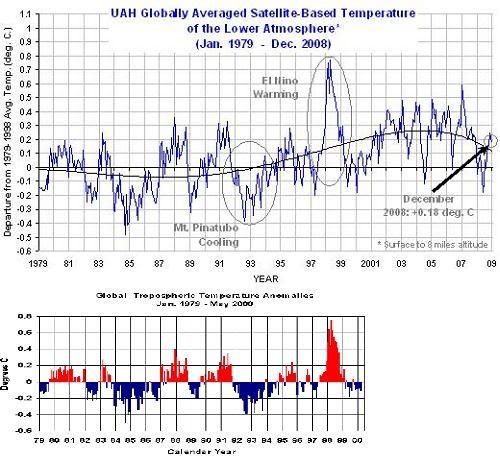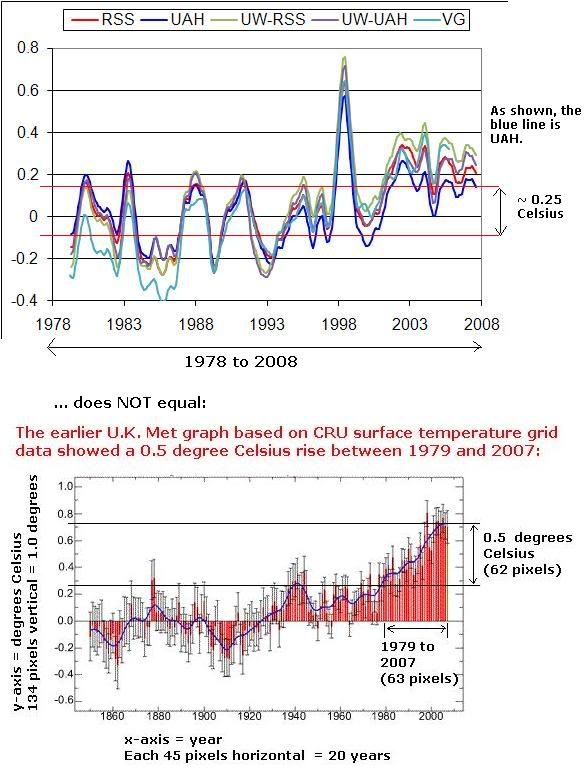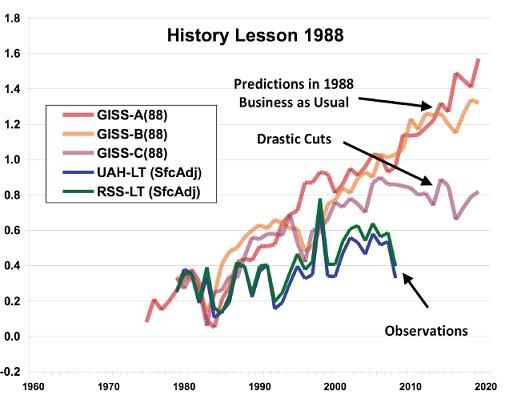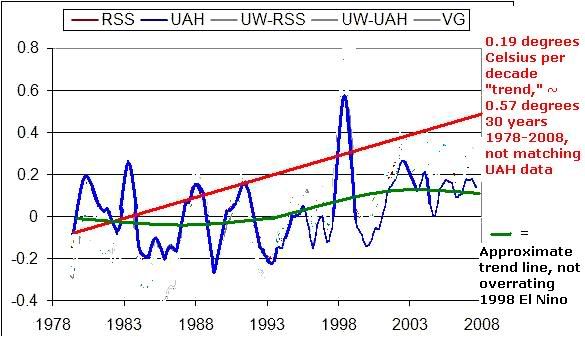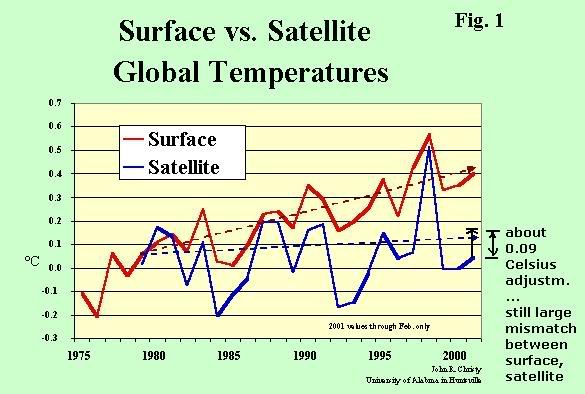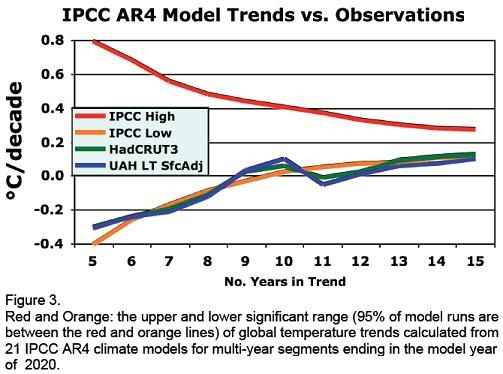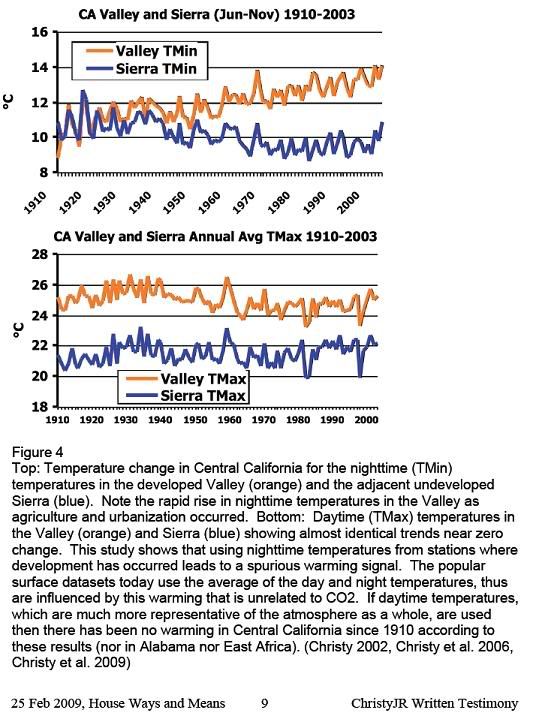Last week the October data started to be released. First, UAH (the University of Alabama at Huntsville) and RSS (Remote Sensing Systems) - the two groups that measure satellite data for lower troposphere - weighed in. The temperature anomaly for October was much the same as September, they reported approximately 0.2°C over the 1979-2000 average for each of those months.
But GISS, unlike UAH or RSS showed a startling jump, indicating the warmest October ever recorded.
 Hot all over: NASA's first attempt at October
Hot all over: NASA's first attempt at October
Ironically for a space organization, NASA/GISS does not use satellites, but prefers to use readings from the surface stations of the National Oceanic & Atmospheric Administration (NOAA).
The map featured a huge red-brown area over Siberia that drew immediate attention. Readers from the blog run by metereologist Anthony Watts, WattsUpWithThat, soon determined what was wrong. The data for a large number of northern stations had their September numbers carried over to October.
After Steve McIntyre of the Climate Audit blog emailed GISS informing them of the error. GISS issued a new set of data the next day, with Gavin Schmidt crediting Watts' blog with spotting the error (while studiously avoiding mentioning McIntyre).
The revised map still showed Siberia to be fairly warm. England and Ireland were no longer in the red zone, while North West Canada was somewhat cooler. But the Hudson Bay area (previously not included) was filled in - in red.
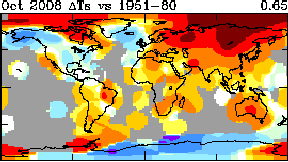 NASA tries again
NASA tries again
The next day the data was adjusted yet again. The Hudson Bay data is removed (but NW Canada was "re-heated" to its original level). The Siberian hot spot was reduced, and the global anomaly stands - for now (
http://data.giss.nasa.gov/gistemp/graphs/) - at a whopping 0.25°C lower than their original announcement.
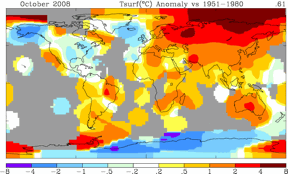 NASA's Third Attempt
NASA's Third Attempt
NASA acknowledges the changes, but other than that provides no details nor any explanation whatever. The older versions of the maps are removed from their site. So why did neither GISS nor NOAA see fit to take a second look?
In all, September data from 90 stations was used in October. GISS director Hansen claimes that data analysis and quality control is rigorous:
Our analysis programs that ingest GHCN [Global Historical Climate Network] data include data quality checks that were developed for our earlier analysis of MCDW [Monthly Climatic Data for the World] data. Retention of our own quality control checks is useful to guard against inadvertent errors in data transfer and processing, verification of any added near-real-time data, and testing of that portion of the GHCN data.
Yet despite receiving a federal budget of over $1bn for climate work, Schmidt admitted last week that only one quarter of a full-time employee checks the data.
"Current staffing from the GISTEMP analysis is about 0.25 FTE [Full-Time Employee] on an annualised basis (I’d estimate - it is not a specifically funded GISS activity)," wrote Schmidt.
On this occasion, neither GISS nor NOAA saw fit to take a second look, a curious response considering that results were such an outlier.
A history of warming
This latest episode is not the first time that GISS, under the authority of Hansen, has operated in an opaque manner. In 1999, GISS data showed the 1930s US temperature to be considerably warmer than that of the 1990s. But the current version shows the 1930s adjusted to
a much lower level.
In 2007, while examining GISS data, McIntyre caught what turned out to be, of all things, a "Y2K" code error that forced a GISS to change the hottest year on US record to 1934. (Subsequent "improvements" have rectified this situation and 1934 reigns no more, but is tied with 1998.)
Dr Hansen had refused to release his adjustment code, but the Y2K incident caused him to relent. He provided a dump of undocumented, non-working FORTRAN code which Climate Audit coders, after much time and effort, eventually managed to get running.
It became apparent that Hansen's code that adjusted for missing data (FILNET) had arbitrarily adjusted the 20th Century temperature trend upwards several times by 0.1°C at regular intervals - with no explanation.
(GISS takes NOAA adjusted data and applies an "unadjustment" procedure; why they do not simply start with NOAA raw data remains a mystery. They then apply their own adjustments. GISS UHI adjustment is particularly controversial, since many cities are adjusted warmer, not cooler, as one would expect from urban heat island effect.)
And Steven Goddard reported
here how the historical data has been altered since 2000.
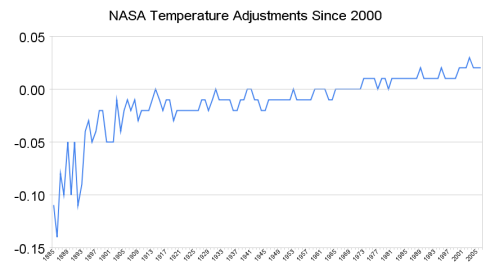 Methods in the spotlight
Methods in the spotlight
Yes, GISS-adjusted historical data matches fairly well with that of the NOAA. But NOAA 20th century raw data trend is adjusted upwards by about 0.3°C. Missing data fill-in (FILNET) and Station history adjustment (SHAP) are both upward. But common sense tells us that the former should be near-neutral (interpolation) and the latter downward (poor station siting and urban creep having introduced often severe warming biases over the years).
In addition, NOAA's adjustment for Urban Heat Island (UHI) over the entire 20th century is an insignificant -0.06°C. Yet papers by McKitrick and Michaels [
abstract -
background] and by LaDochy et al [
abstract] in late 2007 indicate that NASA and NOAA adjustment methods may exaggerate warming trends by a factor of two. (LaDochy estimates UHI trends are x2 during the day and x5 at night. If true, current UHI adjustment is too small.)
GISS makes unannounced, unexplained changes, and this practice is confusing and gets in the way of scholarship. GISS calibrates its data to 0.01°C. This implies a very high degree of accuracy and low margin of error. But their aggregate adjustments add up to tens of times greater than this scale. Therefore to provide data in hundredths of a degree is a clear case of misplaced precision.
Hansen's role as the director in charge of the evidence of climate change has also caused controversy. It was Hansen who gave the issue national prominence during the 1988 Senate hearings. Recently he has urged trials for
"climate criminals" - energy executives who disagree with his hypothesis and policy prescription (for Hansen has both). Hansen traveled to England to testify for the defence of environmental activists who vandalized a coal power station.
Whatever their point of view, scientists' data, methods, and procedures should be properly archived and open to all. And as Dr. Hansen is, after all, a public servant in charge of a vitally important set of data, this imperative would seem to apply doubly.






